Today we set out on a drive to the end of Australia's northern tarred road, at Cape Tribulation. Further north you'll encounter mostly indigenous villages, accessible only with 4x4s, then a narrow strait will land you on the shores of Papua New Guinea. David Attenborough calls this region, the world's most amazing place. Of course his opinion is based on wildlife and botanical studies, but even to the untrained eye, it is pretty amazing.
Our destination was an area called The Daintree, it is a National Park, and site of one of the planet's most pristine rain-forests. To reach it, we traveled along a magnificent coastal highway, the Great Barrier Reef Road, which offers stunning views of unadulterated beaches stretching for miles, where obviously it's quite OK if you have forgotten your bathing suit at home.
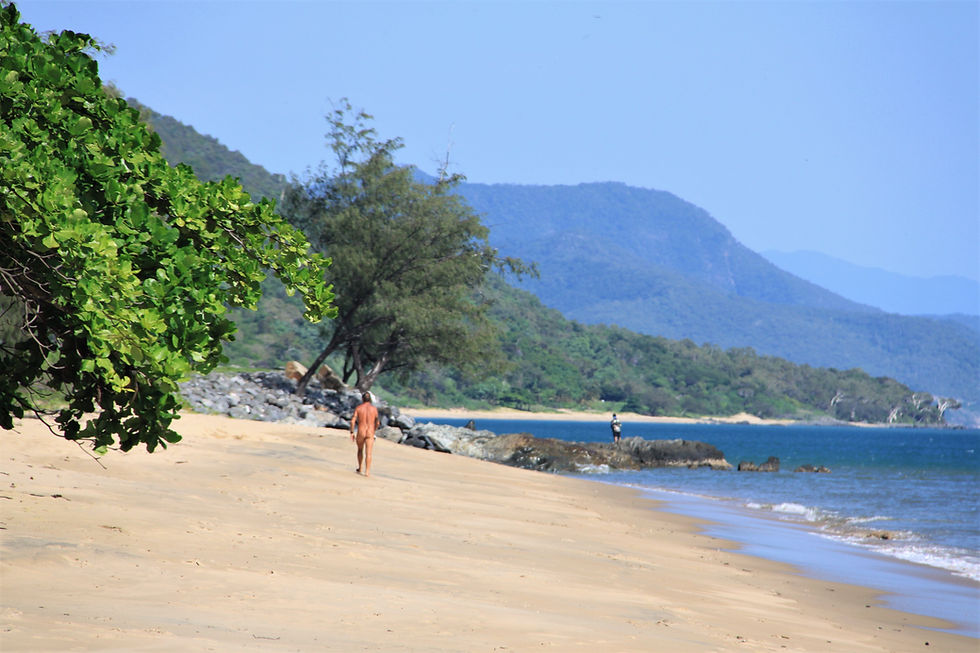
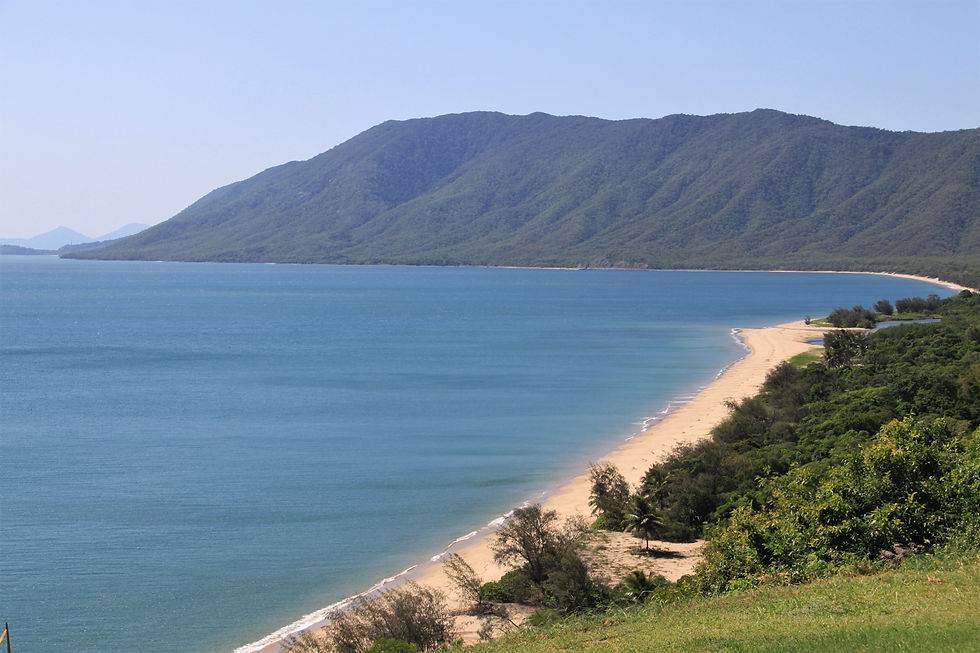
Half way to our journey's end, we reached the classy town of Port Douglas, known, at least locally, for its four-mile beach, which we were intent on checking out. We did manage to get there, but swimming was not allowed, as per this posting.
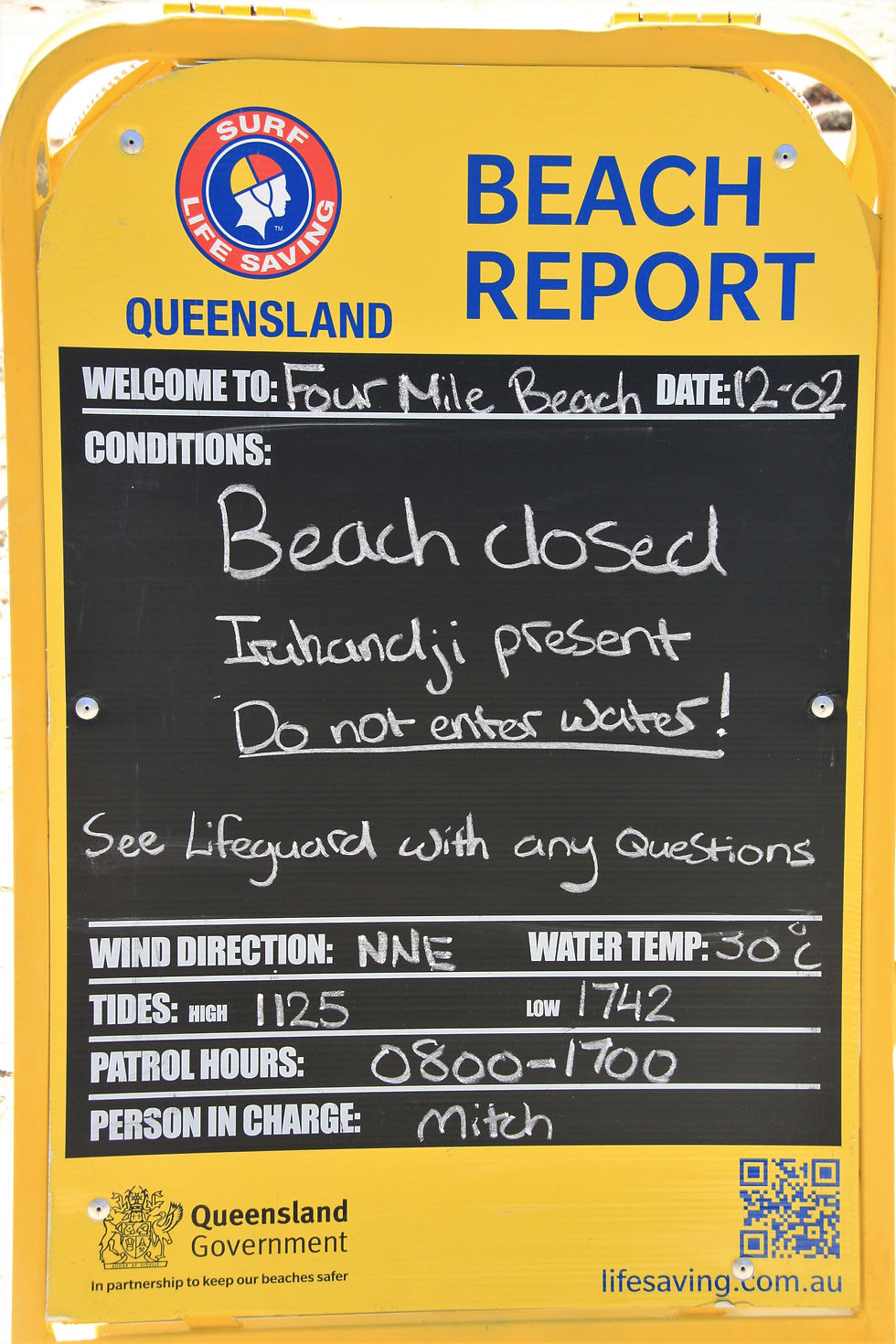
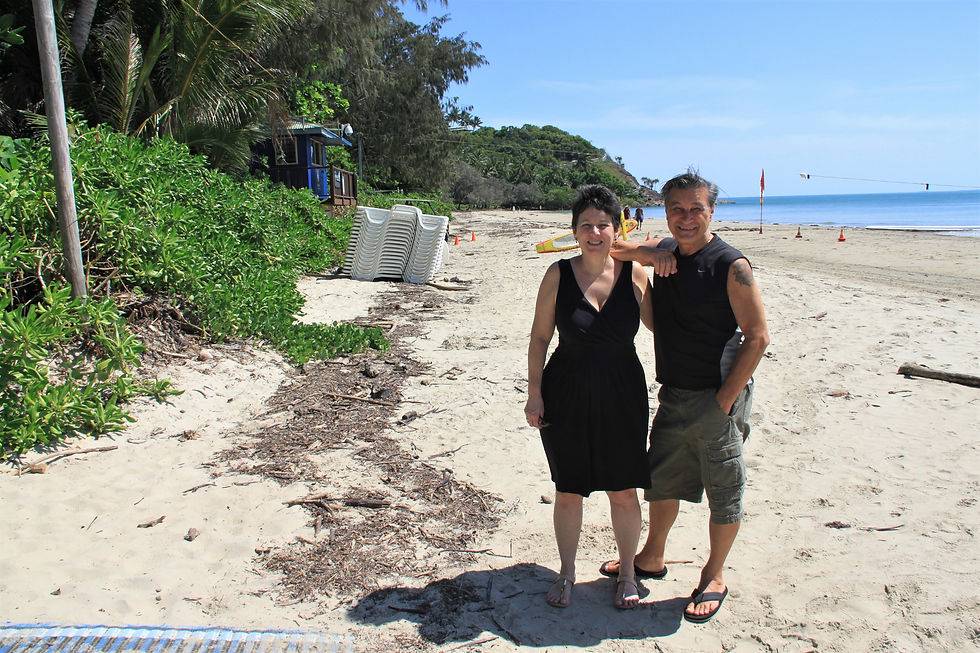
So, what is an Iruhandji, you ask. Well, it's another of those pesky Australian creatures that will make you wish your mom never taught you how to swim. It's the world's smallest, as well as the most venomous jelly fish. One simple sting is one hundred times more poisonous than the bite of a King Cobra. Get the picture? Find another beach, please.
The forested mountains were on our left, and the ocean on our right, but for several miles the road traversed innumerable acres of land dedicated to the cultivation of Sugar Cane.
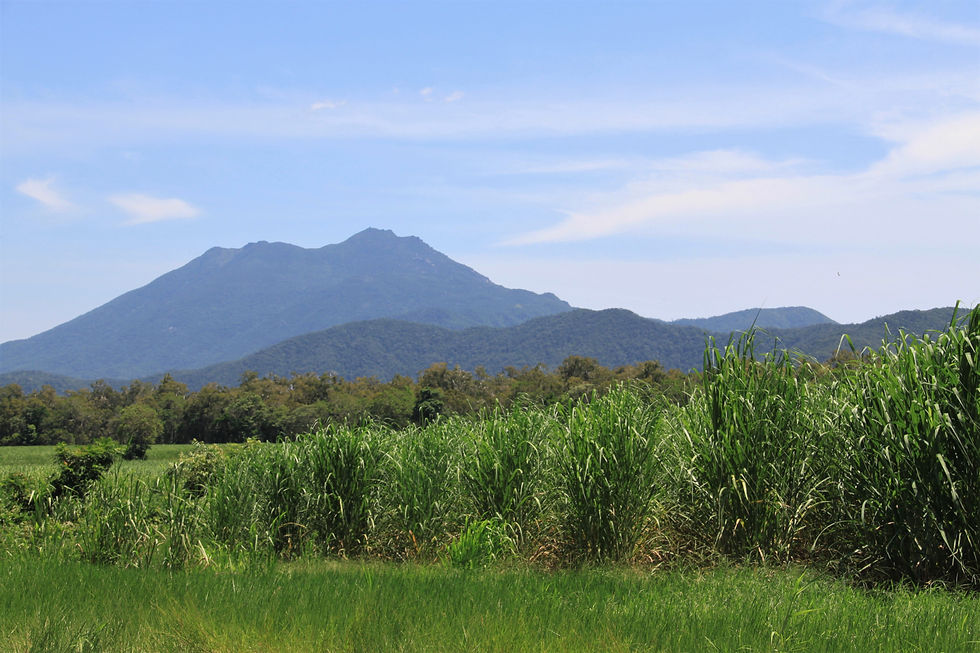
A pit stop in minute Mossman, reminded me once again of how impressed I continue to be with Australia's several species of majestic trees. Just look at the towering branches of this guy, they are a biosphere in themselves, housing untold numbers of animals and parasitic flora.
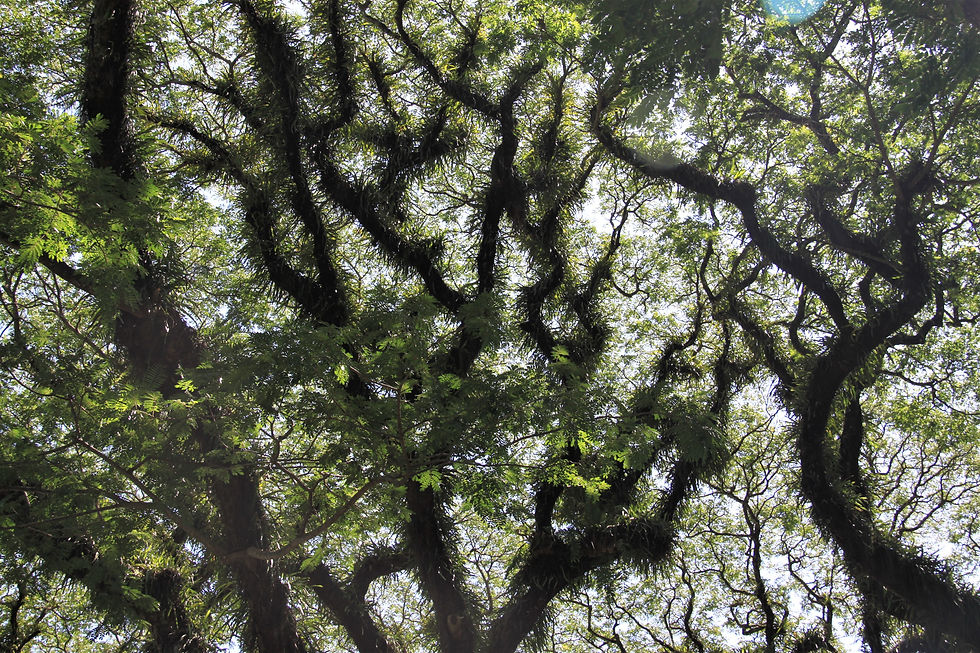
We had lunch at the only restaurant in the town of Daintree, which began as a logging town in the 1870s, but is now home to a mere 100 people. Here you could feel the spirit of Steve Irwin hanging about.

We did give in and took a "river cruise" to spot some of the numerous crocs in the river's waters, but we had no luck. The guide told us that the time was not right for crocodile spotting, as the temperature (once again hitting 100 degrees) was way too high for them to stay out of the water, and the tide was two meters above ideal depth to be seen in the waters. Nonetheless, we did enjoy our time on the Daintree River and learning more interesting facts about the area.
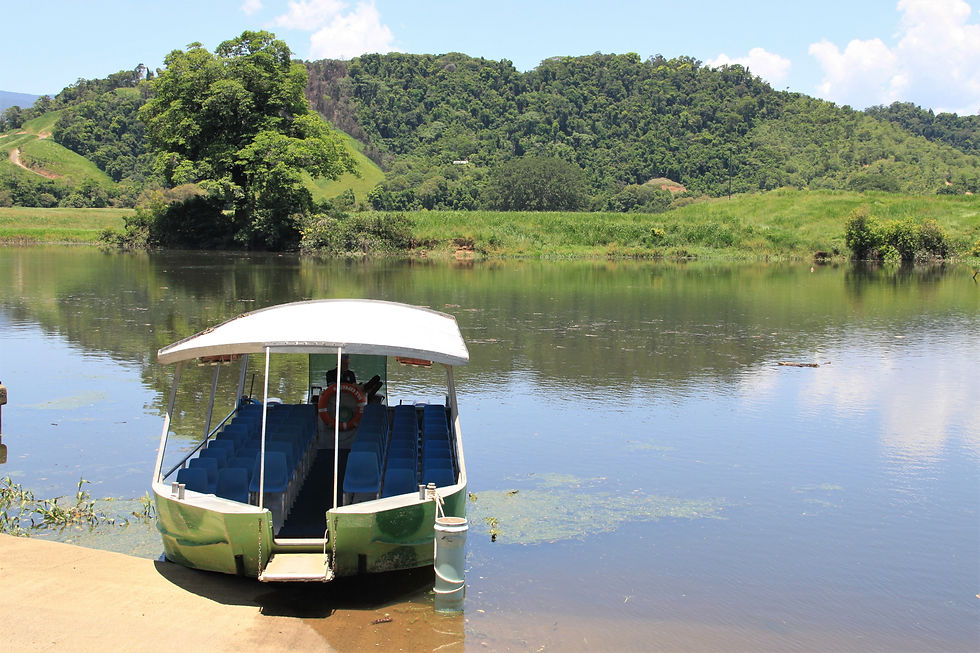
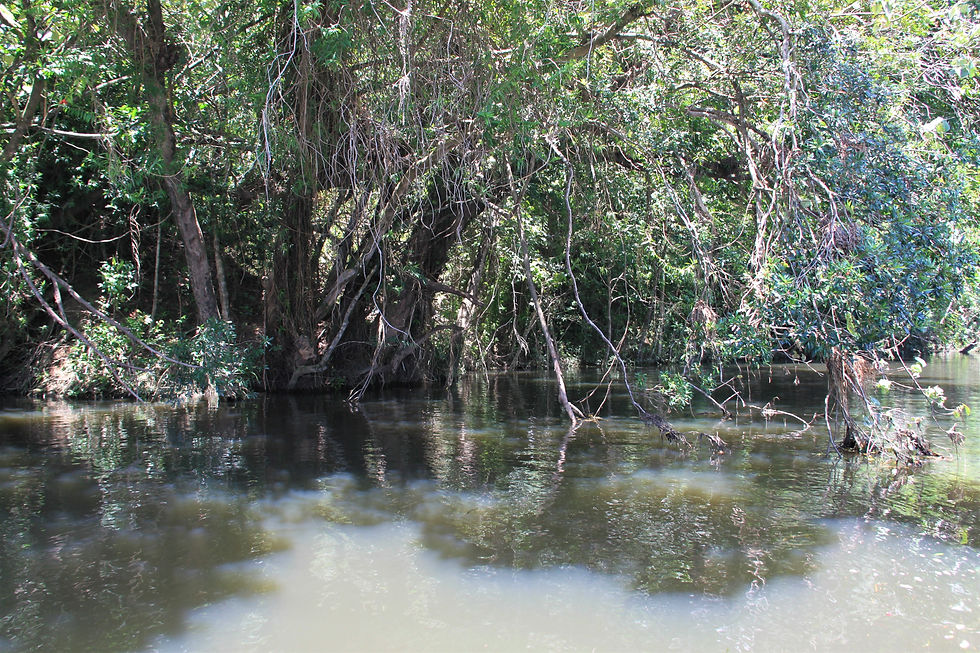
We then entered the National Park, from which we savored some gorgeous views of coastal Far North Queensland.

Our forest immersion continued with a couple of short hikes, once again, with the benefit of well-illustrated boardwalks. Unfortunately pictures are flat and do not provide the scents, the sounds, nor the temperature of the place, but hopefully you have an imagination. This is as much of a jungle as I've ever visited, and I have been to a few, including the Amazon.

Would you like to see a few of the creatures that inhabit this place? Let me show you three, each one larger than my outstretched hand.

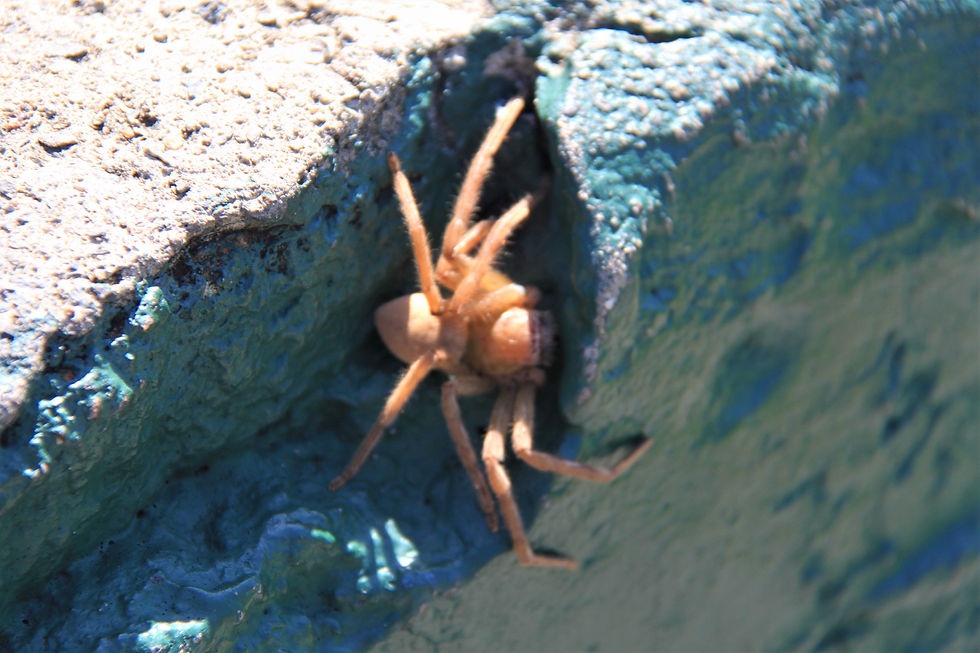

There are also larger and more amiable inhabitants, like the fabled Cassowary, a three-toed colorful bird, as large as an Emu, dating from the time of the dinosaurs. But they are not so easy to run across in a short time span, which may be a good thing, because they are considered to be the world's most dangerous bird, capable of killing a human. We'll just have to be content with knowing that we have been in the Land of the Cassowaries.
The forest does provide respite from the heat and the humidity. Numerous little creeks criss-cross the terrain and provide refreshment.
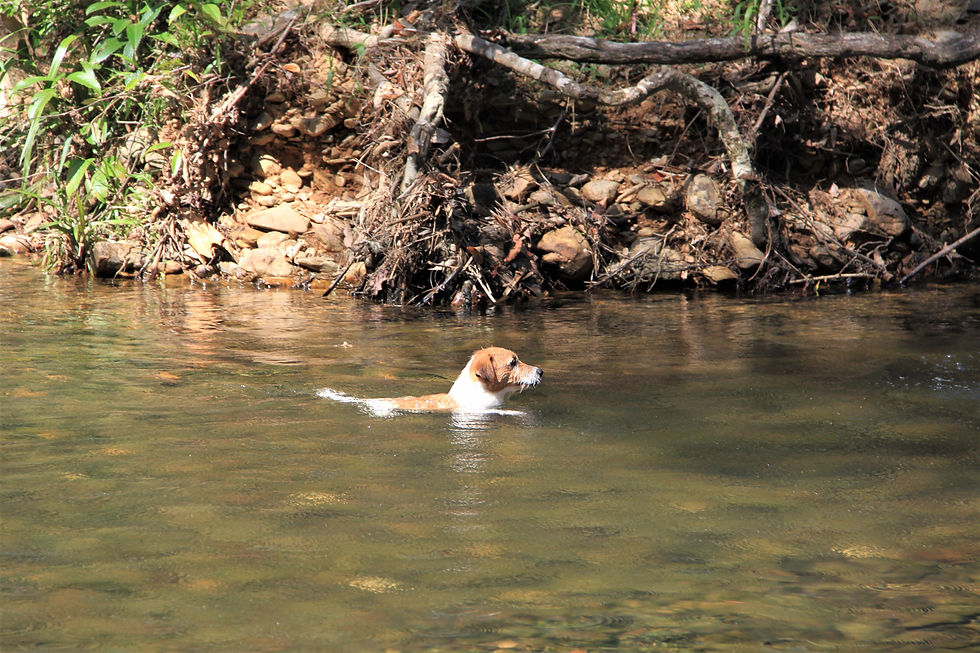
Dulcis in fundo. Yesterday, while booking the tickets for tomorrow's sailing, I ran into a saleslady from the Daintree who was trying to convince the tour operator to display some brochures for her Tropical Fruit Farm and Ice Cream company on Cape Tribulation. Knowing we'd be heading this way, I grabbed one, intending to pay the place a visit. We did and it was great. The Daintree Ice Cream Co. grows thirty varieties of tropical fruits on its property and makes delightful gelato from it. We toured the orchards and enjoyed four varieties of the sorbets; Davidson Plum, Coconut, Jackfruit, and Wattleseed, all made locally on the premises.
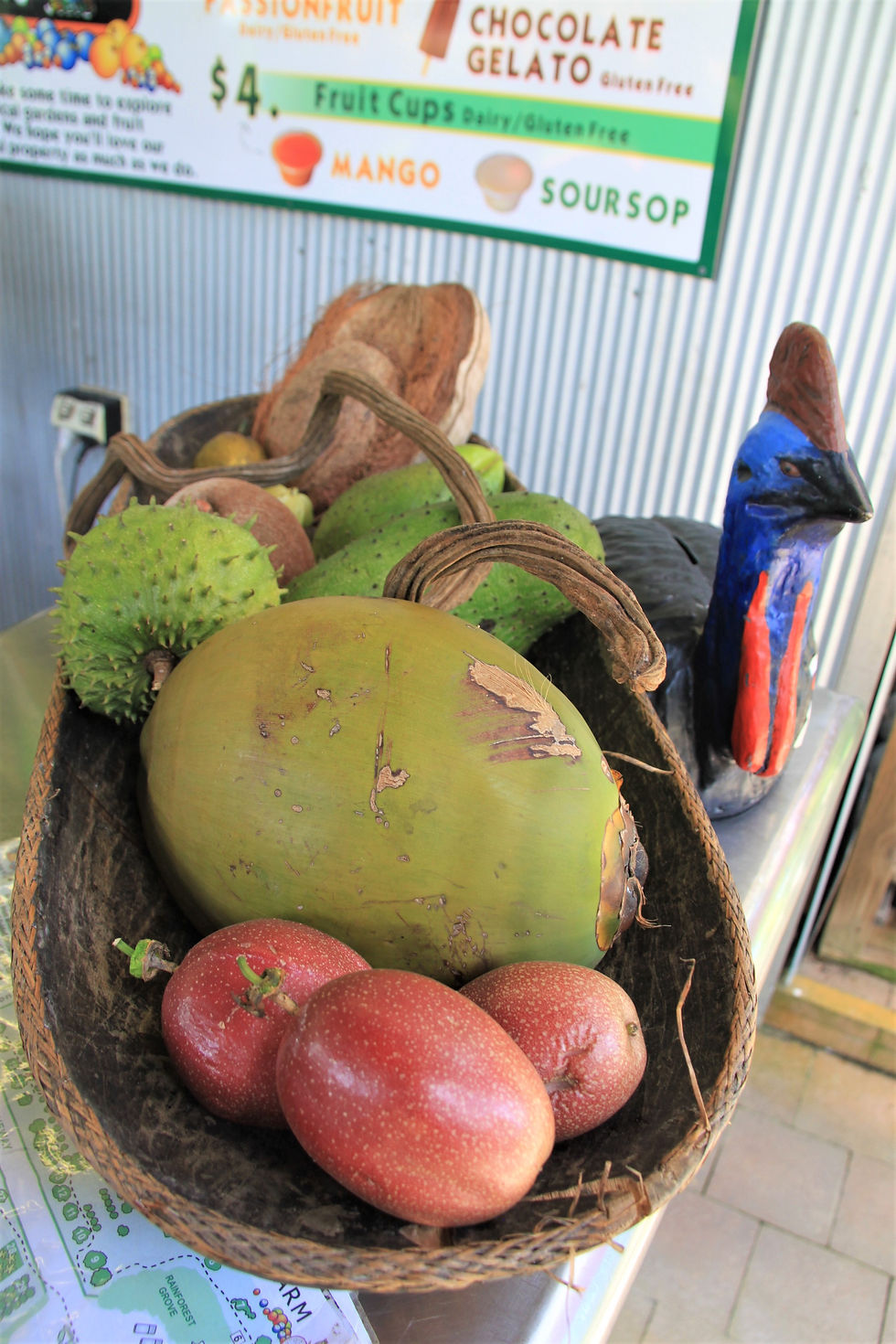
When we got back to Cairns, we had put in a full day, indeed. Yet, after dinner, we found the time to stroll the lively sea-shore promenade, where street musicians were performing, pelicans were gathering in the low-tide, flying foxes were covering the sky and sweat was still pouring down our backs.
Can life get much better?
Comments